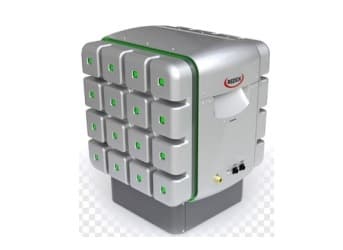Redox Power Systems has signed a partnership deal with researchers at the University of Maryland in order to develop and bring to commercial market a new distributed electricity generation technology that could change the relationship that many consumers have with the energy market and national grid.
Based on the research of Eric Wachsman, the director of the University of Maryland’s Energy Research Centre, by 2014 Redox will introduce a new fuel cell that is one-tenth the size, and one-tenth the cost of all other fuel cells available on the market.
The new solid oxide fuel cell will provide safe, efficient, reliable power, to households or businesses, both local, and remote, all at prices that are competitive with current energy prices.
Warren Citrin, the CEO and director of Redox, told Forbes that “every business or home should be able to safely generate its own energy. We currently rely upon a vulnerable electrical grid. The best way to decrease that vulnerability is through distributed energy, that is, by making your own energy on-site. We are building systems to do that, with an emphasis on efficiency and affordability. These should be common appliances.”
Related article: Replacing Platinum to Build Cheaper Fuel Cells

The Cube. (Forbes)
Redox’s Power SERG 2-80 (a.k.a. The Cube) can be connected to a natural gas supply, whereupon it converts the methane into usable electricity via an electrochemical reaction. It is little larger than a dishwasher, and with no engine and virtually no moving parts, can silently create a constant supply of energy.
Redox boasts that The Cube allows you to “generate your own electricity with a system nearly impervious to hurricanes, thunderstorms, cyber-attacks, derechos, and similar dangers, while simultaneously helping the environment.”
The system is very efficient, operating at 80% efficiency when used to create electricity and heat, and produces virtually no polluting substances, and far less CO2 than other energy sources.
Related article: The Grid Gets a Very Big Lithium Ion Battery
The first models will have a capacity of 25kW, enough to power a moderate grocery store, or a small shopping plaza; but with time Redox will release a 5kW model to power homes, and an 80kW model for larger installations.

Technical information on the Cube. (Redox)
Solid oxide fuel cells have always suffered two major problems that have prevented their success in the open market. They operate at high temperatures of around 950 degrees Celsius, and they have cost a lot to manufacture.
ADVERTISEMENT
Wachsman worked with scores of graduate and undergraduate students over a period of 25 years, speeding millions of dollars of research funding at state of the art laboratories to develop fuel cells that operate at far lower temperatures, generate far more power, and all at just a fraction of the cost.
He explained that they “have achieved major advances in both the composition of fuel cell materials and the micro and nanostructure of those materials. Putting these things together has resulted in a cell that has an extremely high power density, on the order of two watts per square centimetre.”
By. Charles Kennedy of Oilprice.com



















-Marc Sowven, I imagine it will eventually be marketed for remote area electricity generation once more models are in production, one advantage if your gas supply has been disrupted is that you can probably hook up your own gas cylinders, which if you have several should last until the power grids back on
Fuel cells are more efficient than generators. If the SOFC is designed properly it can supply electricity and hot water. A nice "bad weather" backup solution for a remote location that may rely primarily on both active and passive solar solutions for heat and power.
Almost any kind of fuel is more practical than hydrogen for fuel cells in terms of available infrastructure.
Thanks fiona
No moving parts = reliable, efficient, minimum preventive maintenance.
Total cost of wiring, propane take (option), etc. appears doable for my situation